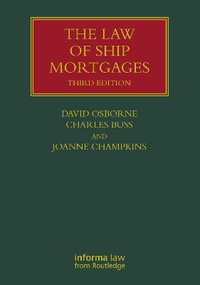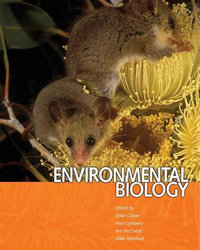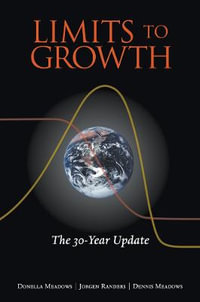| Preface | p. ix |
| The Authors | p. xiii |
| Introduction to Sediment Contamination and Management | p. 1 |
| Introduction | p. 1 |
| Sustainable Development and the Aquatic Geoenvironment | p. 3 |
| Sources of Pollutants | p. 3 |
| Management of Contaminated Sediments | p. 9 |
| Natural Mitigation Processes | p. 11 |
| Bioaccumulation of Contaminants | p. 12 |
| Sustainable Sediment Management Practices | p. 14 |
| Concluding Remarks | p. 16 |
| References | p. 17 |
| Introduction to Sediments | p. 19 |
| Introduction | p. 19 |
| Definition of Sediments | p. 21 |
| Types of Sediments | p. 21 |
| Types of Sediments by Components | p. 22 |
| Primary Minerals | p. 23 |
| Secondary Minerals | p. 23 |
| Organic Matter | p. 24 |
| Oxides and Hydrous Oxides | p. 24 |
| Carbonates and Sulfates | p. 24 |
| Types of Sediments by Grain Size | p. 24 |
| Structure of Sediments | p. 26 |
| Benthos | p. 30 |
| Uses of Sediments and Water | p. 31 |
| Management of Sediments | p. 32 |
| Concluding Remarks | p. 33 |
| References | p. 33 |
| Contaminant-Sediment Interactions | p. 35 |
| Introduction | p. 35 |
| Factors Influencing Contaminant-Sediment Interactions | p. 35 |
| Specific Surface Area (SSA) | p. 35 |
| Cation Exchange Capacity (CEC) | p. 39 |
| Sorption of Pollutants and Partition Coefficients | p. 41 |
| Partitioning of Inorganic Pollutants | p. 44 |
| Selective Sequential Extraction | p. 47 |
| Organic Chemical Pollutants | p. 50 |
| Biotransformation and Degradation of Organic Chemicals and Heavy Metals | p. 54 |
| Bioremediation Processes | p. 56 |
| Bioattenuation and Bioavailability | p. 58 |
| Interaction of Contaminants, Organisms, and Sediments | p. 59 |
| Bioaccumulation | p. 59 |
| Bioturbation | p. 60 |
| Chemical Reactions, Geochemical Speciation, and Transport Predictions | p. 62 |
| Concluding Remarks | p. 64 |
| References | p. 65 |
| Remediation Assessment, Sampling, and Monitoring | p. 71 |
| Introduction | p. 71 |
| Cleanup Goals and Background Values | p. 72 |
| Sampling | p. 72 |
| Analysis and Evaluation | p. 77 |
| Mechanical Properties | p. 77 |
| Strength for Sediments | p. 77 |
| Consolidation | p. 79 |
| Physical Properties | p. 79 |
| Sediment Temperature | p. 79 |
| Grain Size | p. 80 |
| Specific Gravity | p. 81 |
| Chemical Sediment Quality | p. 82 |
| pH | p. 82 |
| Organic Pollution Indicators | p. 83 |
| Total Organic Carbon (TOC) | p. 83 |
| Loss on Ignition (Ignition Loss) | p. 83 |
| Nitrogen | p. 84 |
| Phosphorus | p. 85 |
| Toxic Substances-Trace Metals | p. 86 |
| Toxic Substances-Organic Micropollutants | p. 88 |
| Other Environmental Indicators | p. 90 |
| Test Kits | p. 91 |
| Decision Making Using Indicators | p. 92 |
| Case Studies | p. 93 |
| Investigation of Port Sediments | p. 93 |
| Lake Sediments | p. 97 |
| Concluding Remarks | p. 102 |
| References | p. 105 |
| Natural Recovery of Contaminated Sediments | p. 109 |
| Introduction | p. 109 |
| Natural Recovery Processes of Sediments | p. 111 |
| Evaluation of the Natural Recovery of Sediments | p. 113 |
| Models for Natural Remediation | p. 119 |
| Deposition Rate | p. 121 |
| Source Loading | p. 121 |
| Hydrodynamic Parameters | p. 121 |
| Regulatory Framework | p. 122 |
| Protocols Developed for Monitored Natural Recovery | p. 122 |
| Case Studies of Natural Recovery | p. 124 |
| Enhanced Natural Recovery | p. 129 |
| Concluding Remarks | p. I30 |
| References | p. 131 |
| In Situ Remediation and Management of Contaminated Sediments | p. 135 |
| Introduction | p. 135 |
| In Situ Capping | p. 135 |
| Design Factors for Sand Capping | p. 137 |
| Consolidation | p. 137 |
| Rough Estimate of Cap Thickness for Advection | p. 140 |
| Contaminant Transport | p. 142 |
| Active Capping | p. 144 |
| Rehabilitation of the Coastal Marine Environment | p. 144 |
| Eutrophication | p. 145 |
| Contamination | p. 145 |
| Distribution of Contaminated Particles | p. 146 |
| Resuspension Method for Removal of Contaminated Sediment Particles | p. 147 |
| Technology for Sediment Remediation by Resuspension | p. 148 |
| Design of a Filter Unit | p. 149 |
| Chemical Remediation Technologies | p. 150 |
| Biological Remediation Technologies | p. 153 |
| Creation of Seaweed Swards | p. 156 |
| Case Studies of Remediation | p. 158 |
| Contaminated Sediment Capping Projects | p. 158 |
| Steel Slag | p. 159 |
| Bioremediation | p. 161 |
| Concluding Remarks | p. 163 |
| References | p. 164 |
| Dredging and the Remediation of Dredged Contaminated Sediments | p. 169 |
| Introduction | p. 169 |
| Sustainable Dredging Strategies | p. 171 |
| Physical Remediation Technologies | p. 172 |
| Physical Separation | p. 173 |
| Sediment Washing | p. 174 |
| Flotation | p. 180 |
| Ultrasonic Cleaning | p. 180 |
| Chemical/Thermal Remediation | p. 180 |
| Oxidation | p. 182 |
| Electrokinetic Remediation | p. 183 |
| Solidification/Stabilization | p. 185 |
| Vitrification | p. 186 |
| Thermal Extraction | p. 189 |
| Biological Remediation | p. 190 |
| Slurry Reactors | p. 191 |
| Landfarming | p. 191 |
| Composting | p. 193 |
| Bioleaching | p. 195 |
| Bioconversion Processes | p. 195 |
| Phytoremediation | p. 195 |
| Beneficial Use of Sediments | p. 196 |
| Confined Disposal | p. 198 |
| Comparison between Treatment Technologies | p. 200 |
| Case Studies of Remediation | p. 201 |
| Remediation of Sediments Contaminated with Dioxin | p. 201 |
| Dredging Case Study | p. 202 |
| Case Study of a Washing Process | p. 204 |
| Biotreatment Case Study | p. 204 |
| Concluding Remarks | p. 206 |
| References | p. 209 |
| Management and Evaluation of Treatment Alternatives for Sediments | p. 215 |
| Introduction | p. 215 |
| Generic Framework | p. 215 |
| Remediation Objectives | p. 216 |
| Lines of Evidence | p. 219 |
| Evaluation of the Management Alternatives | p. 219 |
| MNR | p. 221 |
| Dredging | p. 222 |
| In Situ Capping | p. 223 |
| Selection of Technologies | p. 224 |
| Management Plan | p. 226 |
| Sustainable Remediation | p. 234 |
| Strategy for Remediated Sediment Sustainability | p. 235 |
| Concluding Remarks | p. 238 |
| References | p. 239 |
| Current State and Future Directions | p. 241 |
| Introduction | p. 241 |
| Disposal at Sea | p. 242 |
| Beneficial Use of Dredged Materials | p. 243 |
| Sustainability Evaluation | p. 246 |
| Case Study of Lachine Canal | p. 249 |
| Barriers to Technology Development and Implementation | p. 253 |
| Current Needs and Future Directions | p. 253 |
| Concluding Remarks | p. 257 |
| References | p. 258 |
| Sediment Quality Guidelines from Environment Canada and MDDHP, 2008 | p. 261 |
| References | p. 266 |
| London Convention and Protocol: Convention on the Prevention of Marine Pollution by Dumping of Wastes and Other Matter, 1972 | p. 267 |
| Introduction | p. 267 |
| The 1978 Amendments-Incineration | p. 268 |
| The 1978 Amendments-Disputes | p. 268 |
| The 1980 Amendments-List of Substances | p. 268 |
| The 1989 Amendments | p. 268 |
| The 1993 Amendments | p. 269 |
| 1996 Protocol | p. 269 |
| Permitted Dumping | p. 270 |
| 2006 Amendments to the 1996 Protocol | p. 271 |
| Prediction of Sediment Toxicity Using Consensus Based Freshwater Sediment Quality Guidelines: USGS. 2000. Prediction of sediment toxicity using consensus based freshwater sediment quality guidelines. EPA 905/R-00/007, June 2000 | p. 273 |
| References | p. 275 |
| International Sediment Quality Criteria | p. 277 |
| Hong Kong | p. 278 |
| The Republic of Korea | p. 279 |
| Australia and New Zealand | p. 279 |
| Australia and New Zealand Guidelines for Fresh and Marine Water Quality | p. 279 |
| National Ocean Disposal Guidelines for Dredged Material | p. 279 |
| Canada | p. 279 |
| United States | p. 279 |
| USEPA | p. 279 |
| USACE | p. 280 |
| U.S. State Guidelines | p. 280 |
| Florida | p. 280 |
| New York | p. 281 |
| Washington State | p. 281 |
| Sediment Quality Chemical Criteria | p. 281 |
| Wisconsin | p. 284 |
| Europe | p. 284 |
| European Legislation | p. 284 |
| EC Legislation | p. 284 |
| Classification of Dredged Material in the EC Region | p. 284 |
| Belgium | p. 284 |
| Finland | p. 285 |
| France | p. 286 |
| Germany | p. 286 |
| Ireland | p. 288 |
| The Netherlands | p. 288 |
| Norway | p. 292 |
| Portugal | p. 293 |
| Spain | p. 293 |
| Sweden | p. 294 |
| The United Kingdom | p. 294 |
| Qatar | p. 296 |
| Index | p. 297 |
| Table of Contents provided by Ingram. All Rights Reserved. |
























